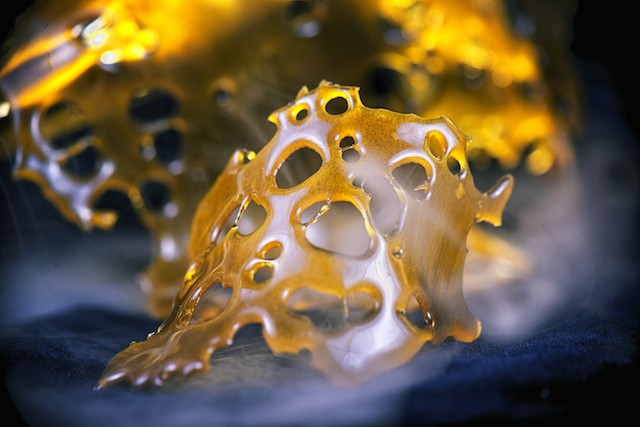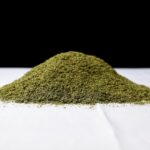Distilling the modern essentials of an age-old process.
Extracting the essence of plants is an ancient process, whether you’re a perfumer preserving attar of roses, a whiskey-maker distilling rye, or a hashish master sifting kief by hand into a pile of golden sand.
The goal is to separate essential compounds from plant material. In cannabis, those compounds—primarily cannabinoids and terpenes—are contained in the sticky-icky crystalline heads of trichomes that coat the plant, especially the flowers. Whereas commercially available top-shelf flower might contain THC levels up to 25 percent, concentrates are refined to 80 or 90 percent.
Various extraction and post-extraction processes result in many forms of concentrates, usually distinguished by texture or consistency. Hash, honey oil, rosin, live resin, budder, bubble hash, wax, and shatter are all cousins and may be applied or ingested in multiple ways from edibles to ingestibles to topicals and combustibles.
Three methods dominate industrial production of cannabis extracts; each has proponents and detractors, and we’re not here to judge. All are solvent-based processes. The “right” method may vary by manufacturers, depending on the end use of resulting concentrates.
C02 extraction, also called supercritical fluid extraction, currently is trending. Initially an expensive and complicated process, the increased popularity of vape pens created a robust market for oils and led to advanced technology and industrial C02 production facilities.
As a solvent, C02 is regarded as producing greater purity because it compresses at a lower temperature. Less heat is generally less degrading to extracted compounds and makes C02 easier to purge in distillation.
C02 extraction also enables more specific compounds to be isolated, making the method a good choice for producers of CBD oil and oil applications requiring specific cannabinoid or terpene profiles.
From a marketing standpoint, some consumers seem to equate C02 extraction with a more “healthful” product image. Nevertheless, C02 is a combustible gas that is colorless, odorless, and can be hazardous if handled improperly in unregulated settings.
BHO or PHO extraction, or hydrocarbon extraction, uses butane or propane as the solvent in the extraction process. Like all solvent-based processes, this method utilizes a “closed loop” system where heat is employed to distill the concentrate. A simple example of this is an old-fashioned moonshine still. The long-used method can be done with basic supplies from a hardware store.
Unfortunately, the cannabis equivalents of illegal moonshiners have given BHO/PHO extraction a bad name. Scary news reports about explosions in residential neighborhoods sometimes involve illegal, home-based honey oil operations. Of course, experts warn these methods are too dangerous to be performed by untrained technicians outside an industrial setting.
Opponents of BHO/PHO extraction also point to varying levels of purity in product that hasn’t been completely purged, lab-tested, or regulated with yet-to-be-developed state guidelines.
Chemical-averse, health-conscious consumers also may have difficulty with the idea of dousing pristine organic flower with lighter fluid. However, butane- and propane-based extraction has been used for decades in industries like cosmetics and pharmaceuticals, among others.
BHO typically produces various cannabis concentrates including shatter, budder and hash oil, and several others. PHO yields higher ratios of waxes and oils than butane, resulting in budder consistencies.
Finally, ethanol extraction—the oldest solvent-based method (with the exception of water, which also is a solvent for extraction)—uses alcohol in the process. This method is used widely in the food industry and other industrial applications.
Ethanol, also known as drinkable alcohol (e.g. ethyl alcohol or other high-proof alcohols), can be found in thousands of formulations for familiar household products and consumables, like mouthwash, perfumes, and deodorants. When used in cannabis extraction, it produces concentrated oil, often used for serious medical applications.












